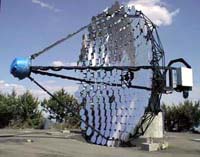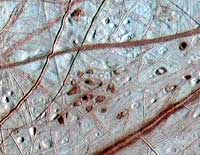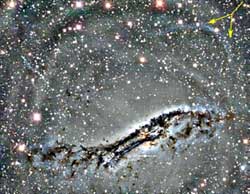This area deals with the fundamental laws and building blocks of nature and how they interact, the properties and the behavior of matter, and research into space and time and their structures.
innovations-report provides in-depth reports and articles on subjects such as astrophysics, laser technologies, nuclear, quantum, particle and solid-state physics, nanotechnologies, planetary research and findings (Mars, Venus) and developments related to the Hubble Telescope.

Physicists have devised a new experiment that will be used in the quest for exotic forces in nature and “additional spatial dimensions.”
The researchers have demonstrated an innovative way to measure a phenomenon known as the Casimir effect – findings that also could have implications for the design of microscopic machines that contain tiny parts on the size scale of nanometers – or billionths of a meter.
The scientists are taking their theoretical findings a step further by

In search of cosmic mayhem
A physicist at Washington University in St. Louis working with scientists at the Smithsonian Institution is unveiling the dark, violent side of the universe.
Studying the highest energy photons known to science, Washington University Associate Professor of Physics James H. Buckley, Ph.D., and his colleagues are analyzing bursts of gamma rays released from massive black holes at the center of so-called active galaxies.
Using the Whipple Ob

Sometime within the next two years, researchers will detect the first signals of gravity waves — those weak blips from the far edges of the universe passing through our bodies every second. Predicted by Einstein’s theory of general relativity, gravity waves are expected to reveal, ultimately, previously unattainable mysteries of the universe.
Wai-Mo Suen, Ph.D., professor of physics at Washington University in St. Louis is collaborating with researchers nationwide to develop waveform t

The oozing of glacial material in the floating ice shell on Jupiter’s moon Europa has important implications for future exploration of the enigmatic moon and prospects of life in its ice-covered ocean, according to a University of Colorado at Boulder professor.
Robert Pappalardo, an assistant professor in the astrophysical and planetary sciences department and one of the world’s foremost Europa experts, said the icy moon is believed to contain an ocean some 13 miles under its icy

A British physicist has come up with a way to reveal the shifting and shining colours that form in the dark spots where light waves interfere with each other. The patterns await experimental demonstration but computer-generated images are already illuminating new aspects of light that had until now remained in the shadows.
When two waves meet their peaks and troughs interfere. If the peaks are in phase you get a higher peak as the energies of each wave add together, two troughs take away from eac

Astronomers have identified the vivid scar of a cosmic catastrophe: a blue arc thousands of light years long produced when a galaxy pulled in a smaller satellite galaxy and tore it apart.
The streak is composed of clusters of young blue stars that formed as the larger galaxy, Centaurus A, absorbed the smaller galaxy about 200 million to 400 million years ago. Researchers will report in the December Astronomical Journal that their discovery suggests absorption of smaller galaxies may be a sig